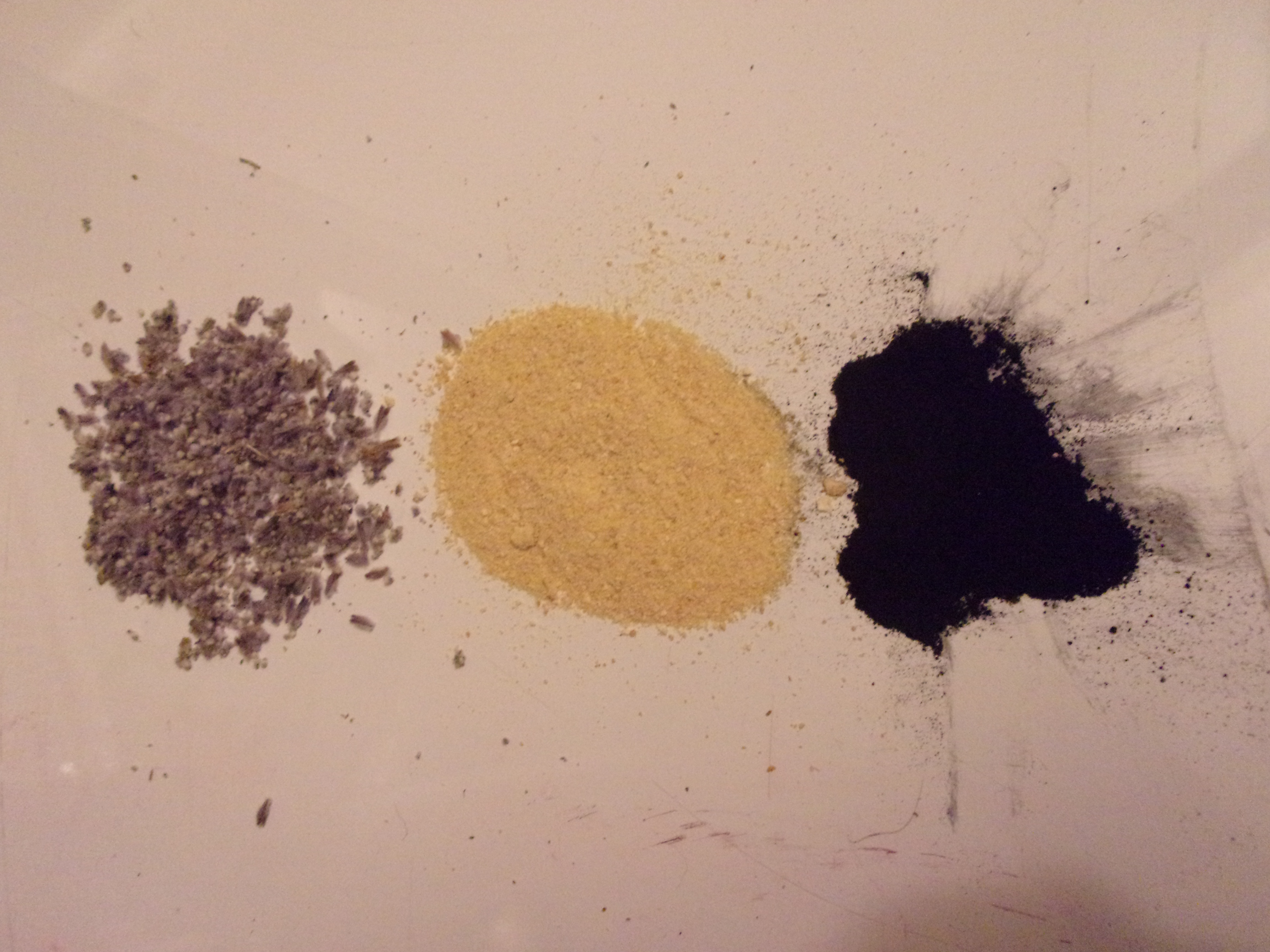Soap Making Colorants

Use Soap Making Colorants to enhance the visual appearance of your soaps.
To get nice light pastel colors in your soaps use the natural coloring from plants, herbs and vegetables.
In this picture we have lavender buds, orange peels and activated charcoal to use for natural pastel colors.
For bright colors use Pigments, Oxides or Mica's to electrify your soap color combinations. There are many color combining techniques with which you can make your soaps visually stunning!
Natural Colorants to use.
Natural Soap Making Colorants are derived from Fruits and Vegetables, Plants, Herbs, Spices, Flowers and Botanicals. They will generally give your soaps a very light pastel or earthy color.
Here is a list of 10 desired soap colors and the item that will deliver the color.
1. Black. Use activated charcoal. Pulverize the activated charcoal into a powder. Add the desired amount at trace.
2. Gray. Use ground Pumice. It will not only exfoliate but it will color the soap gray. Add the ground pumice at trace.
3. Faint Blue. Use Red Cabbage. Mix the cabbage in a blender then strain the liquid and use in place of the water or use as a percentage amount of the water for the soap batch.
4. Light Purple. Use Lavender Buds. Dry them out. Grind them up into a powder. Add the powder at trace.
5. Faint Orange. Use Orange Peels dried and ground up into a powder. Add these at trace.
6. Orange/Brown. Use Red Beets. Juice the beets, then add the liquid as a percentage of the total water amount.
7. Brown. Use Coffee Grounds. Fresh or spent coffee grounds are fine. Just make sure they are pulverized to a powder. Add them at trace.
8. Faint Yellow. Use Egg Yolks. Mix them up well and add at trace.
9. White. Use Lard as your only oil/fat in making the soap. No additives. Use an essential oil if you like.
10. Pale Green. Use Kale, Cucumber or Basil. If they are ground to a dry powder, add them to the mix at trace. If you juiced them, add the liquid as a percentage of the total water amount.
Pigments for coloring your soaps
Pigments are brightly colored compounds used to color other materials. There are two types of pigments used today, they are Inorganic pigments and Synthetic Organic pigments.
For soap making colorants we will be using the Inorganic Pigments. They are created through 'Oxidation' which is a simple chemical reactions (among several others) used to create these brightly colored pigments. The result is many bright colors such as Neon Green, Cobalt Blue or Bright Yellow. These bright pigment colors will last a long time in your soaps.
Use Mica's to make your colors sparkle!
Mica's are metamorphic minerals that were formed through extreme heat and pressure within the earth. Muscovite Mica is one of more than 35 types of mica mined today. It occurs naturally as thin sheets of translucent material (what looks like 50 page books) embedded in granite rock and other materials. Here is naturally occurring mica.
When Mica is pulverized it has a sparkle to it! Add the bright colored pigments to the pulverized mica (through a heating process) and you will have bright colored mica's that will make your soap colors sparkle!
Titanium Dioxide - your bright white soap making colorant.
Titanium Dioxide is a mineral that is mined worldwide in places such as Australia and Japan. It is processed and purified for many uses including cosmetics and sunscreens. Titanium is one of the more commonly found elements on earth.
According to the USGS "95% of titanium is consumed in the form of titanium dioxide, a white pigment that is superior due to its high refractive index and light scattering abilities which gives excellent hiding powers and brightness." Add titanium dioxide to make an amazing bright white soap bar.